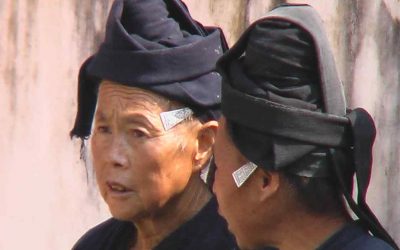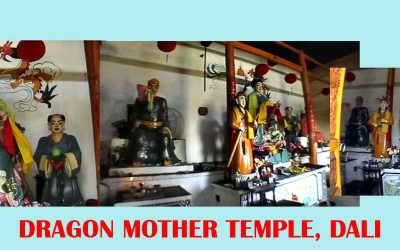Mao Dun’s Spring Silkworms-A must read
In short: A set of stories of exacerbated realism by one of the finest pens of 20th century Chinese literature, which no one should miss in order to understand both the literature and the life and history of contemporary China.
After my disappointment in recent days with Mao Dun’s «Midnight», I have reread the short stories and novellas collected under the title «Spring Silkworms and other stories». I had already read the book 20 or 25 years ago, and when I took it in my hands again I knew that I was facing some hard stories in which the suffering of his characters is described with an almost mathematical precision, the causes of the same are chained in a concatenation of events and policies that only result in ruin, disaster, hunger, suffering.
The corrupt policies of the Kuomintang government, the Japanese invasion, usurious loans, with monthly interest, taxes, political and natural calamities, all play against the common people, always the losers. And although Mao Dun almost always leaves the reader on the brink of the disaster, when it already seems inevitable, and strives to make the protagonists of his stories the families or characters who are not the ones who are suffering the most from historical and political circumstances that condemn millions of people to hunger and misfortune, the reader ends each of the stories with a heavy heart.
Each of these stories is a masterpiece. The descriptions of family decadences encompass a broad geographical, economic, labor and social spectrum, as if the author in writing them and the publisher in putting them together in this volume wanted to show a reality of Leo Tolstoy’s phrase: «All families are alike in happiness, each is different in its misfortune.»
And one of the fascinating aspects of the work is that it shows how misfortune affects anyone, changing their life prospects overnight, sometimes in the midst of disbelief, like Mr. Li from «Wartime,» or Miss Lin from «The Lin Family Store.» As if the first blows of a fortune that is going to become increasingly adverse will be met with the disbelief of those who live their normal lives.
Precisely these two stories, along with those that tell us about the atmosphere in the village of Old Tong Bao, shaken first by the falling prices of silk cocoons and then of rice, are the most elaborate. And while the first two tell us about a misfortune that we could call conjunctural, a war in «Times of War» or a complex political and economic moment in «The Lin Family Store», the second ones tell us about a system that cannot be maintained any longer, as it leaves the peasants continually on the edge of the abyss of misery.
In short, we find ourselves with a set of stories that no one should miss to understand both literature and the life and history of the first half of the twentieth century in China.
Mao Dun. Spring Silkworms and other stories. Translated by Sydney Shapiro. Foreign Language Press. Beijing. 1979.
Cite this article as: Ceinos-Arcones, Pedro, «The first description of the Religion of the Yi,» in Ethnic China, 21 marzo 2021, https://ethnic-china.com/the-first-description-of-the-religion-of-the-yi/.
Last posts
Zhuang phallic ritual
Zhuang phallic ritual Zhuang minority has an interesting phallic ceremony. According to their legends, in antique times there was no communication between the two banks of the Hongshui River, women living on one bank of the river and men on the other. The god...
Zhuang Nationality in Wenshan Prefecture of Yunnan
Zhuang Nationality in Wenshan Prefecture Wenshan Zhuang and Miao Autonomous Prefecture lies in the eastern section of Yunnan Province. Scarcely visited by local and international tourists with populations not considered of enough interest by the academic world, is one...
History of the Zhuang nationality in China
History of the Zhuang nationality in China It is widely thought that the ancestors of the Zhuang were the ancient Yue. But there are no unanimity about the character, history and territory of these Yue. One people called “Yue” appears in the Chinese chronicles of the...
The Interpretation of the Dreams among the Hani
The Interpretation of the Dreams among the Hani As a general rule dream interpretation in China has followed a symbolic line, attributing to the memories of experiences lived during the dream a value related, sometimes not so clearly in a first analysis, to the values...
Temple to the Mother of the Dragon of the Bai
Temple to the Mother of the Dragon of the Bai Everyone who visits the ancient city of Dali goes to see the famous Three Pagodas, as it is one of the most famous monuments of the city and all of Yunnan, but very few know that right in the village next door, just 100...
Unconventional languages used by the Jinuo
Unconventional languages used by the Jinuo Not having a writing system, the Jino developed several systems of signs that covered communication in different situations: from the wooden gates in the mountain paths that warn of danger, to the daliu to expel demons, the...










